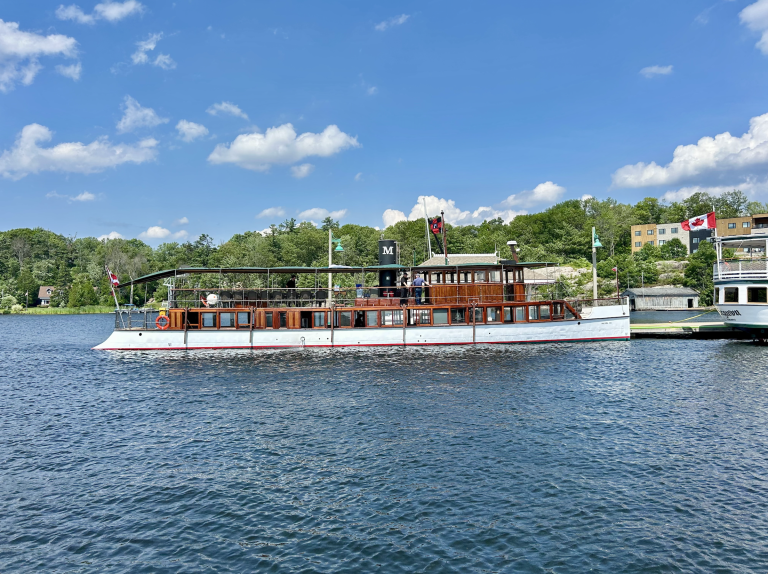Learning how to tie a boat to a dock is a crucial skill for every boating enthusiast. Mastering this skill can protect your boat and avoid inconveniences. This guide will walk you through the best techniques to secure your boat and cover different scenarios you may face.
How to Tie a Boat to a Dock Key Takeaways
- Essential gear and best knot-tying practices
- Tips for safely securing your boat in various scenarios
- Best practices to ensure safety and efficiency
Gear You’ll Need to Tie Your Boat

Boat Cleats
In order to secure your boat to a dock, you’ll need boat cleats. These T-shaped pieces of hardware are perfect for tying up your boat. They’re sturdy, simple to use, and incredibly reliable.
Boat cleats are often made from galvanized metal but can also be found in polymers or wood. If your boat doesn’t have cleats, installing them yourself is straightforward. Plus, they come in various shapes and sizes, so you can pick ones that suit your boat’s look.
Make sure you get enough cleats for both the port and starboard sides. This is important because you’ll want the flexibility to tie up from either side or both when docking in a slip. Typically, you need at least three lines to properly secure your boat, so ensure you have at least three cleats on each side.
For instance:
- Bow Cleat: This is placed at the front of your boat.
- Stern Cleat: This goes at the rear.
- Midship Cleat: This is positioned in the middle of the boat.
Bumpers
When docking, protecting your boat from scratches or dents is crucial. That’s where bumpers, also known as fenders, come in. These protective devices attach to the sides of your boat and act as a cushion between the boat and the dock.
Bumpers are typically made from foam or rubber, sometimes a mix of other materials. They help absorb the shock and prevent damage when the boat bumps against the dock or other boats. They’re handy in busy marinas or when the water is choppy.
Here’s a quick rundown of what you need:
- Small Boats: You might only need one bumper for the front and a couple for the sides.
- Large Boats: You’ll need more bumpers, which should be larger to provide the necessary protection.
Correct bumper placement is also key. They should be placed at points where the boat is most likely to make contact with the dock or other boats. This ensures that the paintwork or the hull isn’t damaged.
Ropes
To tie your boat securely, you’ll need strong, reliable ropes. It’s always a good idea to have more rope than you think you’ll need because losing or damaging your primary rope can put you in a tough spot.
The best type of rope for this job is nylon. Nylon ropes are strong, flexible, and capable of absorbing the boat’s weight. This flexibility is key as it helps prevent the rope from snapping under pressure. They’re also widely available and relatively inexpensive.
When choosing ropes, consider:
- Three-Strand Rope: Known for its strength and durability.
- Double-Braided Rope: Offers extra resistance to harsh weather and abrasion.
Make sure you’re using ropes specifically designed for boating. Other types of nylon rope may not have the required strength or flexibility needed for tying a boat, especially in rough conditions.
To give you a clearer idea, here’s a table:
| Type of Rope | Features | Usage |
|---|---|---|
| Three-Strand Rope | Strong and durable | General tying and docking |
| Double-Braided Rope | Extra resistant to weather conditions | Secure tying and mooring |
With the right ropes and other gear, docking your boat becomes much easier and safer. This ensures that your boat stays put and in great condition, ready for your next adventure on the water.
Tying the Boat to the Dock

Step 1: Prepare Your Boat for Tying
Before you begin docking, it’s crucial to prepare your boat for tying. First, check if your boat’s cleats are securely fastened. If needed, tighten any loose screws with a screwdriver.
Ensure your dock lines, which are already attached to your boat cleats, are untangled and ready. This will save you the hassle of untangling ropes while docking. Also, drop the bumpers down to absorb the impact when you dock.
As you approach the dock, assess its condition. Ensure the dock’s cleats and pilings look secure and capable of holding your boat.
Step 2: Set Up the Dock Lines
Dock lines are the ropes you’ll use to secure your boat to the dock. Generally, you’ll need three types of dock lines, each serving a particular purpose:
- Bow Line: This line attaches from the boat’s front cleat (either on the port or starboard side) to a dock cleat.
- Spring Line: This line is connected by a cleat located closer to the boat’s stern. It runs at an angle to a dock cleat, preventing forward and backward movement.
- Stern Line: This rope ties the stern cleat (at the back of the boat) to a dock cleat.
If you’re docking in a slip with docks on both sides of your boat, you’ll use four lines: two bow lines (one on each side) and two stern lines.
For emergencies or brief mooring, a single dock line called the breast line can be used. This line runs straight from the midship cleat to the dock cleat. However, this setup is much less secure and should be avoided for anything other than quick stops.
Step 3: Tie the Dock Lines
Once you’ve got the dock lines ready and set up for tying, it’s time to secure your boat. Here are the steps to follow:
- Spring Line First: Toss the spring line to someone on the dock. This person can then hold the boat in position.
- Bow Line: Tie the bow line to a dock cleat ahead of the bow. This line keeps the boat from moving backward.
- Spring Line: Secure the spring line to a dock cleat positioned at an angle towards the stern. This helps prevent forward and backward movement.
- Stern Line: Tie the stern line to a dock cleat behind the stern, spacing it equally from the midship as the bow line.
Always tie the lines at an angle. This allows the boat to move naturally with the waves, reducing strain and ensuring safety.
Remember, don’t let the lines fall into the water. They can get caught in the propeller, which can cause major issues.
Types of Knots to Use
Easy Cleat Knot
The easy cleat knot is a go-to for many boaters due to its simplicity. Here’s how you can tie it:
- Make a loop with your rope and thread it through the cleat.
- Take the loop from the other side and spread it around the cleat’s horns.
- Pull the rope’s ends to secure the loop tightly.
This knot is great for quick stops or when someone is unfamiliar with more intricate knots. It keeps your rope from falling into the water and holds your boat fast while you handle other tasks.
Advanced Cleat Knot
When you need more security, the advanced cleat knot is a reliable choice. This one offers added safety, especially for longer stays at the dock. Follow these steps:
- Loop the rope around one side of the cleat from the bottom.
- Cross the rope over the top to the other side.
- Loop over the first side again.
- Cross over the other side one last time, tucking the tail between the top layers of rope.
This will result in a one-and-a-half figure eight around the cleat. Make sure to pull tightly at each step; the knot relies on tension and wrapping rather than traditional tying. Use this knot for every dock line to ensure your boat stays put.
Bind Knot
If you come across docks with poles instead of cleats, the bind knot is your solution. Here’s how to tie it:
- Wrap the line around the pole.
- Wrap it again, crossing the rope over itself once.
- Feed the tail end through the wrapped line and tug tightly.
Use this method for each dock line to ensure your boat is securely fastened. This knot works well with poles and helps when cleats aren’t available.
Things to Think About

Weather Factors
Bad weather can quickly turn a pleasant day on the water into a difficult one. Wind, in particular, plays a huge role in how you dock and tie your boat. If the wind picks up suddenly, it can make the water choppy, complicating docking.
Always check the wind’s direction before tying up. For example, if the wind is blowing toward the dock, you should angle your boat away from the dock. If it’s blowing away from the dock, keep your boat more parallel to the dock.
Wind can change direction, so it’s important to monitor your boat and adjust as needed. Regular check-ins can make a big difference in keeping your boat safely tied.
Water Levels
Tides can dramatically change water levels, affecting how securely your boat is tied. A tide chart is a helpful tool for anticipating these changes. Ensure your lines have enough slack to accommodate rising or falling tides.
When choosing a dock or slip, consider the tides. For larger boats, docking farther from the shoreline might be more practical. Even if tides aren’t a concern, wakes and waves from other boats will naturally shift your boat’s position.
Duration of Docking
How long you plan to dock your boat is a key factor in how you tie it. For short stays, you can tie up based on current conditions. For longer stays, you may need to add extra lines, like a spring line or breast line, for added security.
If you’re on a lake, water levels are generally more stable than in the ocean, so there’s less worry about leaving enough slack in your lines for a long stay.
Tips and Best Practices
1. Angle the Boat When Docking
When docking your boat, it’s a good idea to angle it slightly, up to around 20 degrees, rather than making it perfectly parallel with the dock. This method helps increase space between the boat and the dock, reducing the risk of the boat hitting the dock hard when waves or wakes come through.
Angling the boat just a bit lets it move more freely and safely.
2. Check Your Lines Often
Before every trip, make sure to go through a checklist to ensure everything is in good order. Part of this list should include checking your ropes for any signs of damage like fraying, cuts, or abrasions.
Ropes that have been outside in the elements can become weak and discolored over time. It’s better to replace them regularly than to have a line snap when you need it most.
3. Take Your Time but Be Ready to Act
Docking and tying up a boat might seem easy, but it has its risks. People can fall overboard or lose items between the boat and the dock.
Always wear a personal flotation device (PFD) until the boat is securely tied up and you’re safely ashore. Properly setting up the dock lines takes time, but it’s important to be ready to react quickly if something goes wrong.
Whether you’re by yourself or have company, remember to have one person in charge of giving directions.
Frequently Asked Questions
What knot works best for tying a boat to a dock cleat?
The cleat hitch is the most reliable knot for securing a boat to a dock cleat. It is simple to tie and untie, yet it holds strong against tension.
To tie it, wrap the rope around the base of the cleat, make a figure-eight, and then tuck the end of the rope under itself.
How do I tie a boat to a dock ring for safe mooring?
Tying a boat to a dock ring involves using a bowline knot. First, pass the rope through the dock ring. Then, create a small loop in the rope a few feet from the boat.
Pass the working end through the loop, around the standing end, and back through the loop. This knot is secure and easy to untie.
What steps should I take when tying a boat to a dock in rough water conditions?
In rough conditions, use multiple lines to secure your boat. Here are some tips:
- Use spring lines: These help prevent forward and backward movement.
- Double-up lines: Adding extra lines can provide more security.
- Check cleats and knots regularly: Ensure everything stays tight and in place.
- Use fenders: These protect your boat from heavy impacts against the dock.
How can I ensure my boat is securely tied at a floating dock?
For a floating dock, it’s important to account for movement. Here’s what to do:
- Use flexible dock lines: These can absorb the shock from waves.
- Adjust regularly: As the water level changes, so should the tension in your lines.
- Utilize spring lines: These help keep the boat stable against the dock.
How should the rope tension be set when mooring a boat overnight to handle tidal changes?
To handle tidal changes when mooring overnight, leave some slack in your lines. Here’s how:
- Estimate tidal range: Check local tide charts.
- Leave extra slack: About 2-3 feet of slack can usually handle tidal changes.
- Use adjustable lines: These allow for easy adjustments as needed.
What should I do if no cleats are available to secure my boat to a dock?
If there are no cleats, there are still ways to secure your boat:
- Use dock rings or pilings: Wrap the rope around these and tie it securely.
- Use chafing gear: This protects the rope from wear and tear.
- Anchor points: Look for sturdy structures on the dock where you can tie your lines.
These methods help keep your boat safe even when traditional cleats aren’t available.







